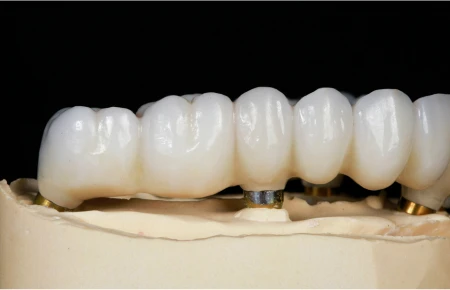The Evolution of Dental Implants in 2024: Guide from River square Family dentist

Many traditional methods have defining shortcomings associated with time, cost, and function when it comes to tooth replacement. Dental implants have changed the game significantly over the last couple of decades, introducing an effective, long-lasting solution where none existed. In 2024 and beyond, dental implants continue to evolve in form, function, and process, as today's best technology shapes how they're designed, placed, and maintained. The guide below will summarize the latest breakthroughs and what they represent for patients needing tooth replacement.
Understanding Dental Implants: A Brief Overview
To better understand the landscape, it's essential to answer the question: What are dental implants? A dental implant is a titanium post surgically positioned into the jawbone beneath the gum line, allowing your dentist to mount replacement teeth or a bridge into that area. An implant doesn't come loose like a denture can. Dental implants benefit general oral health by not having to be anchored to other teeth, like bridges.
Dental implants are recognized for their strength and the way they mimic natural teeth. They're the solution of choice for many patients at Rochester Hills Family Dentistry because they offer the look, feel, and function of natural teeth. But how are they evolving?
Advancements in Dental Implant Technology
As we head toward 2024, dental implants are seeing several technological advancements improving patient results. One of the most significant is the integration of digital dentistry into the implant process. Digital impressions, advanced 3D imaging, and computer-aided design (CAD) are already a part of the Rochester Hills dentistry landscape, and they will only grow more advanced.
Enhanced Imaging and Planning
Thanks to highly advanced 3D imaging techniques like cone-beam computed tomography (CBCT), dentists can now see an incredibly detailed and clear picture of a patient's bone structure. This leads to much more accurate planning of the implant surgery, allowing the implants to be positioned more precisely and, as a result, a higher rate of successful osseointegration – the process by which the implant fuses with the jawbone.
Custom 3D Printing for Custom Oral Health
This is as good as the future for dental implants, thanks to 3D printing technology allowing dental professionals to create personalized implants and surgical guides with unheard-of precision. At Rochester Hills Dentistry, for example, 3D printing may someday make it possible for prosthetics to be made to the exact dimensions of a patient’s mouth, allowing a new tooth to fit seamlessly alongside his natural teeth.
The Patient Experience: What Dental Implant Candidates Can Look Forward To
Fast forward to 2024, and you, the patient of tomorrow at Rochester Hills Dentist, might have received a dental implant using 3D tech, experienced zero complications and almost zero discomfort, and left the dentist’s office a festive 60 minutes later.
Minimally Invasive Treatment
"The trend we’re seeing is moving toward more minimally invasive [surgery]," said Dr. Weber. "Along those lines, there are dental implants that are getting smaller and smaller -- some we call micro-implants -- and new surgical tools that make the implant placement much less traumatic to the surrounding tissue, which can mean a quicker recovery, less soreness afterward."
As digital technology continues to evolve, the future of dental implants will lead to a fully digital workflow. This will allow for the planning, surgical process, and final crown placement to be optimized for each patient individually. This will lead to an even more efficient and customized treatment plan.
The materials used in dental implants are consistently being studied and researched for better integration with the body’s tissues. New surface treatments and coatings could lead to dental implants that will bond better to the bone and resist more bacteria than ever before.
The many advances in the dental field will surely make dental implants more accessible, non-invasive, and customized in the future. We are very excited about that future.
For those in Rochester Hills, MI seeking a dentist at the forefront of these advancements, dentist Rochester Hills MI continues to embrace and implement the latest technologies involved with dental implants. With this team, who always puts patient comfort and unparalleled care above all else, you're in good hands — you'll be guided through the next innovation comes with a no-hassle, no-stress but oh-so-beautiful experience.






